Red Crosser Diana Coulter is currently in Nepal, where she is sharing updates on how the Canadian Red Cross is providing aid after the recent earthquakes. Here are her previous updates on helping to save lives of mothers and babies, providing a safe play space for children affected by the earthquake, and a day at the Canadian Red Cross field hospital.
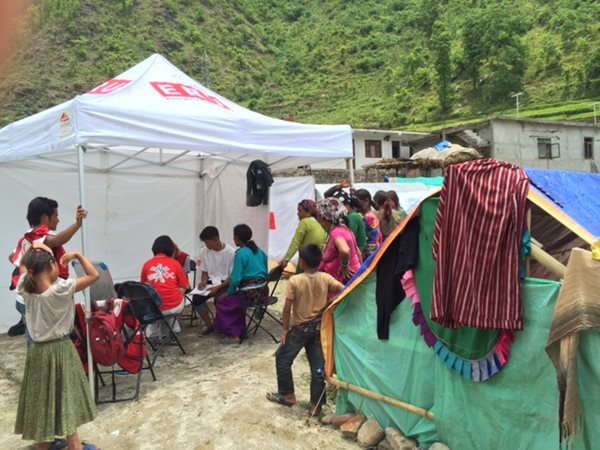
Long view of mobile medical clinic. /Photo courtesy: Diana Coulter
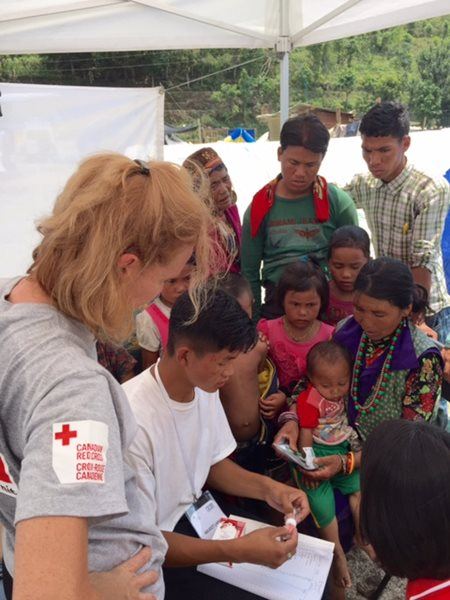
Grandmother Norchi Tamang and baby Anuraj with Red Cross translator Abijeet Lama and nurse Danielle Despres. /Photo courtesy: Diana Coulter
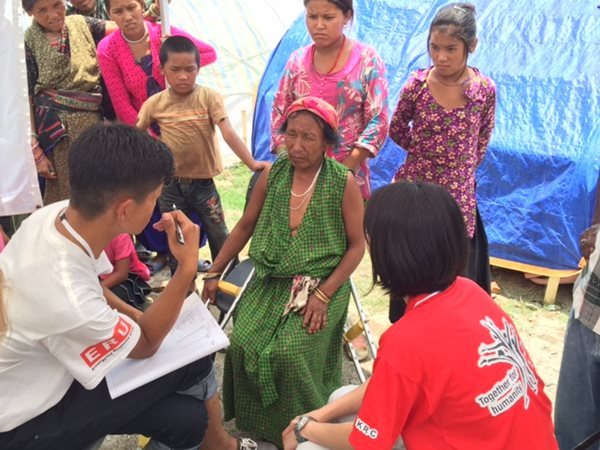
Truli Maya Tamang tells Dr. Jenny Chu about leg pain after surgery from earthquake. /Photo courtesy: Diana Coulter
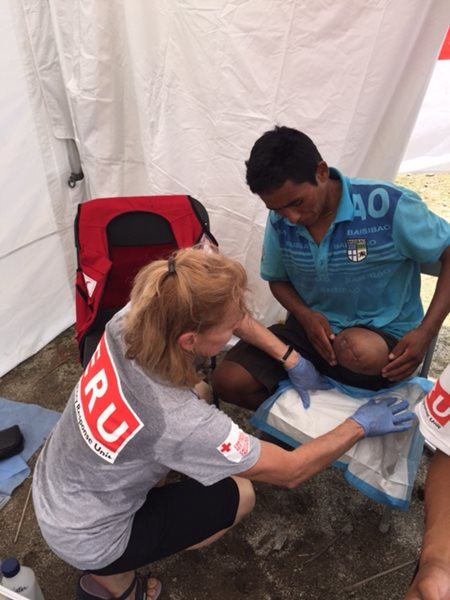
Nurse Daniele Despres with Sedar Tamang who lost his lower leg in earthquake. /Photo courtesy: Diana Coulter
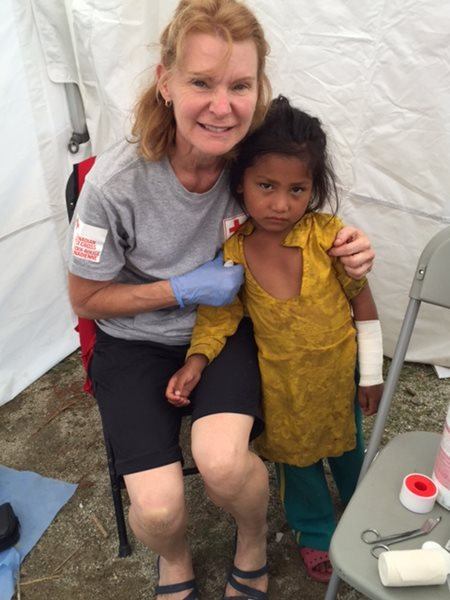
Canadian nurse Danielle Despres with little Geeta who had an infection on her arm. /Photo courtesy: Diana Coulter
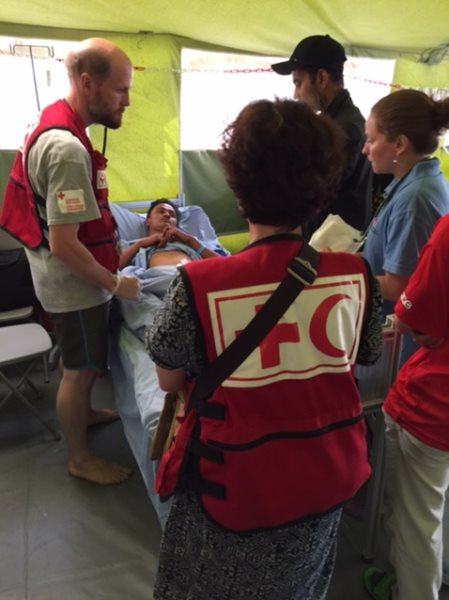
Surgeon Philippe Demers (left), doctor Christine Hwang (back of head), nurse Claudia Chavez (right) and local Nepal doctor (in cap) examine appendicitis patient post operation. /Photo courtesy: Diana Coulter
Rocking and pounding for hours along a rubble-strewn road that looks more like a mountain goat trail, the Canadian Red Cross mobile medical team is on the move.
Four times a week, a doctor, nurse and translator with the Canadian field hospital in Dhunche, Nepal, load heavy metal trunks filled with medical supplies and travel to surrounding villages along earthquake-ravaged roads.
On this day, the mobile clinic is headed to Betrawati Camp #1, a community created from tents, tarps, scraps of metal and wood in a hot, humid valley where around 135 families now call home. Most camp inhabitants fled their village perched high in the mountains after their homes and livelihoods were destroyed by the disaster.
Although the camp is just 40 kilometres from Dhunche, it takes the medical team about two and half hours to reach it, winding along damaged mountain roads still threatened by landslides.
When the team finally erects its small tent in the camp field, a crowd slowly gathers of people gripping angry bellies, scratching rashes or limping on crutches.
The first patient is an older woman who winces and points at her ribs. The translator explains that she fell during the earthquakes. Examining her, Dr. Jenny Chu suspects broken ribs and prescribes pain medication, while Canadian nurse Daniele Despres, of Gatineau, Quebec, gives the patient a bar of soap and ointment to treat a skin rash across her shoulders.
For more than two hours, the medical team sees a steady stream of patients, many complaining of itchy red rashes.
“It is very, very difficult for people to wash properly here, especially without clean water,” notes Despres.
A grandmother arrives with a lethargic-looking baby on her hip. Norchi Tamang explains that baby Anuraj lost his mother and four other family members in the earthquakes. Now she is looking after him and three other survivors. Today, the baby is suffering from severe diarrhea. The medical team dispenses oral rehydration salts and zinc tablets.
Hobbling on crutches into the clinic tent, Truli Maya Tamang, 60, tells the medical team that she still has pain in her hip and leg after surgery following the earthquakes. When her house in the Haku area collapsed on top of her, she had to be evacuated by helicopter to hospital.
Examining her injuries, Chu and Despres dispense pain medication and advise that she rest more. “But to stay in one of these tents must be so hot and uncomfortable,” Despres sympathizes.
Next, Bomijangi Tamang, 72, sits heavily in a chair before complaining of body pain and poor eyesight. Chu says she likely has cataracts developing, and prescribes cream for a red skin rash that also rims her eyes. Applying a dab of cream, Tamang announces with a wide grin that she already feels better.
“For some people here, I think they just want to know that we care,” says Chu, a Hong Kong Red Cross Society aid worker. “They have lost so much.”
Canadians are encouraged to donate to the Nepal Region Earthquake Fund.